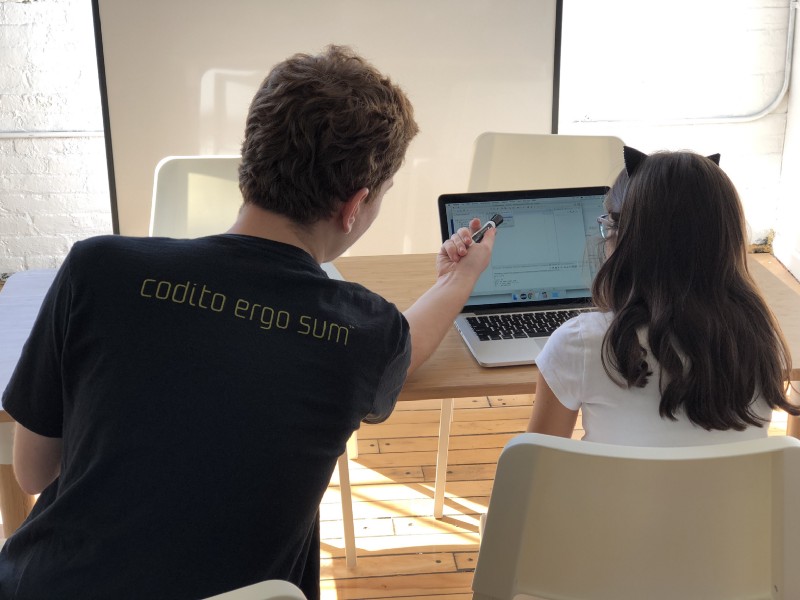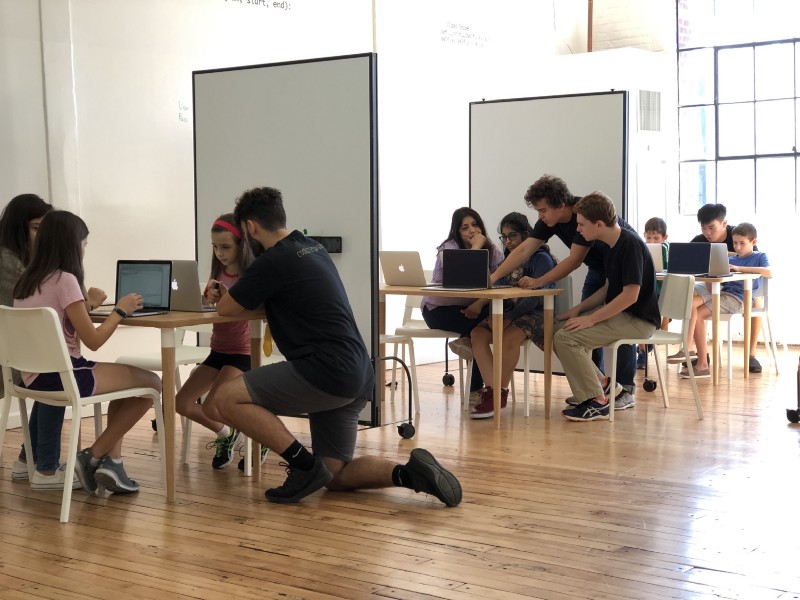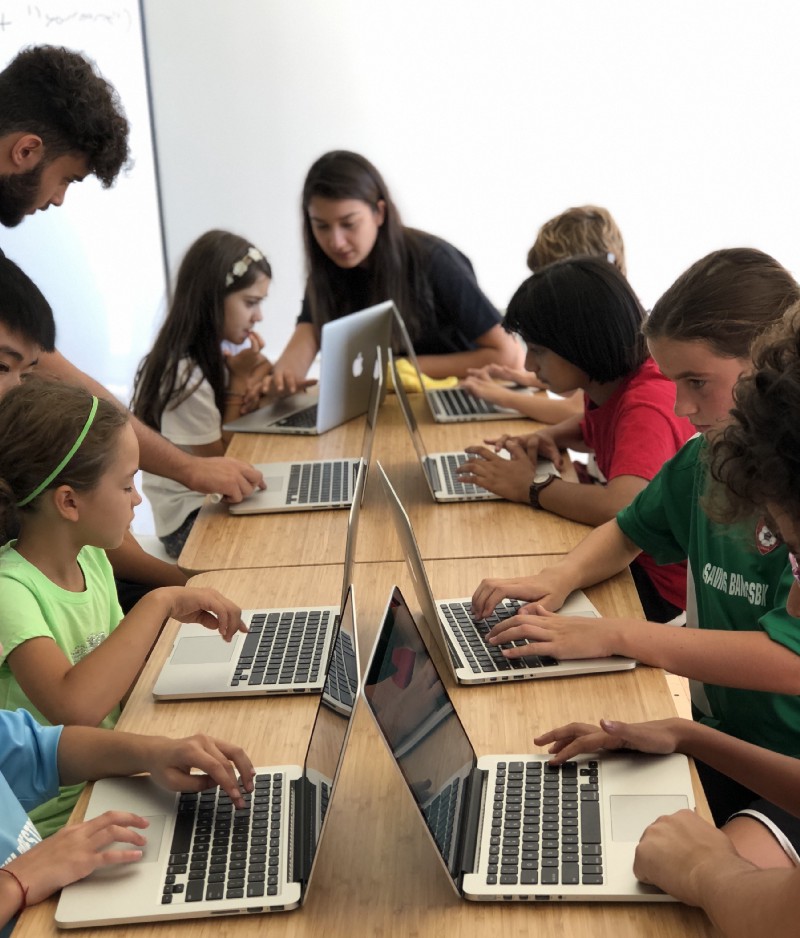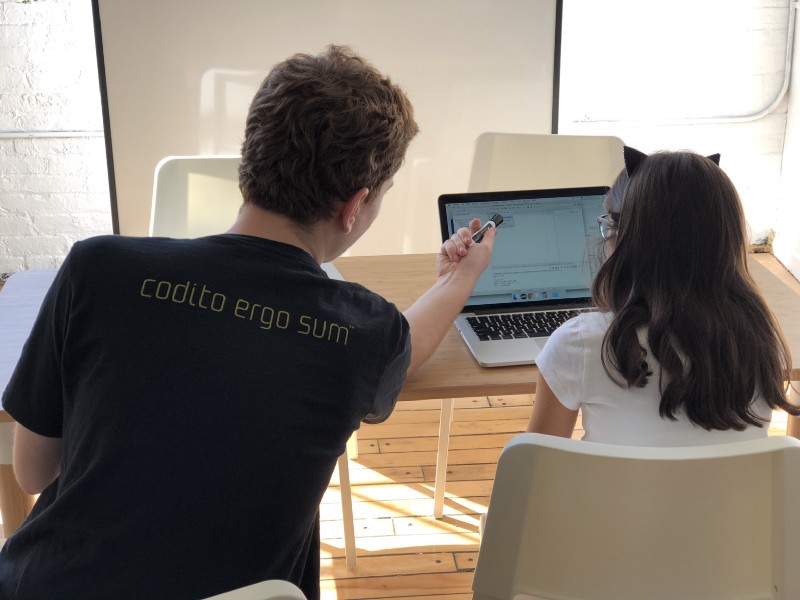by Steven Fink
Coding Our Tech-Minded Kids to Become Self-Actualized Teachers of Tomorrow
Coding schools today should be doing more than teaching kids Java and Python. They should be helping them become experts in how to teach Java and Python.
That’s one the many lessons I have learned in the years after founding the technology camp SummerTech. Opening our doors in 2002 on the campus of Purchase College, SUNY, in New York, we quickly learned that what separated us — what parents really appreciated — wasn’t the base knowledge our campers possessed when they returned home.
Rather, our success was driven by our ability to show these children that all around them were diverse yet like-minded kids. That there was a community where they could feel comfortable in their own skin. And most importantly, that the collaborative, supportive nature of our coursework allowed them to become leaders — and often the influential coding teachers other kids so looked up to in our classes.

At SummerTech and Coditum, our full-year coding labs for 8–17-year-olds — every student starts on the track to become a teacher. While that might not be a long-term reality for everyone, the approach fosters a level of interaction that has been extremely beneficial to both our students’ understanding of the material and their ability to become fully self-actualized individuals.
3-to-1 Ratio
For our classes, we employ an almost unheard of 3-to-1 student-to-teacher ratio, creating four-person sessions that are both immersive and highly collaborative. While having so many teachers requires quite a commitment on our part, the results — truly impactful education in coding and important socialization for thousands of youths — have proven to be worth the investment.
If you’re a public school educator, you may be reading this and thinking: “Ha, a 3-to-1 student-to-teacher ratio. Good one. That’ll never fly here.”
But why not? Imagine you could invest a little time in teaching a dozen 7th graders how to code. How valuable might it be to both the school and those students if, in 8th grade, they’re given the opportunity to share that knowledge with kids a bit younger than themselves?
It’s what they call a win-win. Everyone gets smarter.

While the Internet is full of perfectly acceptable courses in Java and Python — the most commonly recognized and accessible computer coding platforms out there today — we don’t use an online curriculum.
Ours is driven by the interaction between students, their peers and our teachers. Using laptops and white boards, they tackle the coursework together, ensuring it’s understood at a fundamental level.
In small groups, it’s also easier to match students with peers and teachers who are the best fit for their particular learning needs. Not everyone works at the same pace and some personalities aren’t a perfect fit for others. Having small group sizes allows for easy on-the-fly adjustment.
‘Social Director’
Jake Rowen is a perfect example of the promise of leadership development in education. A native of Rye, New York, Jake was an introverted 10-year-old when he joined us at SummerTech. He hardly spoke for his first three weeks with us, but we gave him the time he needed to open up. He spent many summers with us, developing into a top-flight head teacher and someone his dad, Larry, now calls “the social director of the cruise.”
Jake is currently studying computational linguistics at UC Santa Cruz.
“Calling it transformative would be such an understatement,” Jake says of his experience transitioning from shy student to outgoing teacher. “My ability to understand concepts of all kinds shot up exponentially. My whole outlook on being with other people changed, and most importantly, I felt like I really found my home.”
To give you an idea of how our model works in practice, here’s how we’ve structured Coditum: at age 15 or after 9th grade, and after completing the first five modules of our curriculum, students can become interns. After 10 shifts of assisting in classes, they receive a technical review and, if successful, can become paid junior teachers. They move on to senior teacher positions after entering college.
Often, you’ll see coding schools and camps advertising that they don’t utilize junior teachers or counselors in training (CITs). Only the BEST for your kids, they say! I couldn’t disagree with this philosophy more strongly.
Just when these schools are telling excited kids “there’s no place for you here…move along,” they should be doubling down on the skills their students just learned, allowing them to understand this knowledge on an even deeper level by becoming teachers, and to hone the social skills involved in being a leader. That’s what will make a difference when they sit down for that job interview some day, not whether they’ve passed their college computer science course.
Of course, they will pass that course, because interacting with your peers in small groups is fun, and fun leads to learning. For example, at SummerTech we cover the entire AP computer science course in about three to four weeks of instruction.

Jared Okun, a 19-year-old at Rensselaer Polytechnic Institute who’s also been one of our student-turned-teachers, recently told me, “I’m impressed with myself that I can teach children college-level material.”
“Teaching code is a great way to improve my own knowledge of code and increase my experience working with code that isn’t mine,” Jared said.
As with most industries, finding and retaining strong employees is the key to any successful education initiative, including small businesses that teach skills such as coding. Those educators who invest in the teaching potential of their students end up with a network of smart, charismatic and confident young adults, who love the experience of sharing knowledge.
What more could you ask for?
